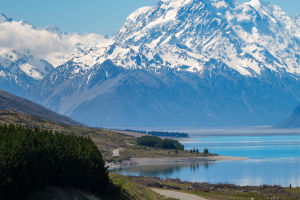The Netherlands, located in Western Europe, was covered by primitive forests and swampy trees long ago.
Because of its low-lying terrain, the Netherlands always faced erosion from the tides. The survival instinct gave the Dutch people the motivation to build dikes, reclaim land from the sea, and create up to 9-meter-tall windmills to build a thriving home.
In 1229, the Dutch invented the world's first human-powered windmill. For a long time, people used primitive methods to grind grains, initially manual labor, then horse-drawn bicycles, water-powered mills, and later windmills.
Due to the flat and windy terrain of the Netherlands, windmills quickly became popular. The rapid increase in demand also drove the transformation of windmill technology. Windmills were no longer limited to grinding grains but also developed into processing barley, sawing logs into beams and boards, making paper, pressing oil from various oil crops such as flaxseeds and rapeseeds, and grinding spices to make mustard.
Despite their diverse uses, people still prefer to remember the phrase that has been passed down in Europe: "God created man, but the Dutch created land with windmills."
Indeed, without these towering pumping windmills, the Netherlands would not have obtained nearly one-third of its land from the sea, nor would it have had the later aroma of cheese and tulips.
Dutch windmills, the largest of which are several stories high, have wingspans of up to 20 meters. Some windmills are made of large pieces of wood. At the end of the eighteenth century, there were about 12,000 windmills throughout the Netherlands. These windmills were used to grind grains, and coarse salt, extract oil, compress woolen cloth and felt, make paper, and drain marshy areas. It is these windmills that constantly pump and drain water that protect two-thirds of the country's land from sinking and being threatened by artificial fish.
Since the twentieth century, due to the development of steam engines, internal combustion engines, and turbines, ancient windmills that rely on wind power have become obsolete and almost forgotten. However, because windmills use natural wind power, there is no pollution or depletion, so they have not only been used by the Dutch people but have also become a new type of energy, deeply attracting people.
There are about 2,000 various types of windmills in the Netherlands. The Dutch people love their windmills and often praise them in folk songs and proverbs. The windmill building is always dressed up as beautifully as possible. On grand festivals, flower garlands are hung on the windmills, and national flags, cardboard suns, and stars are hung.
Although the Netherlands is now a modern country, it is surprising that it has not lost its ancient traditions. Windmills, which symbolize Dutch national culture, still faithfully operate in every corner of the Netherlands. During its heyday hundreds of years ago in this windmill country, there were nearly 10,000 windmills.
However, the advent of other power machinery such as steam engines, internal combustion engines, and electric motors eliminated these windmills, and today there are still nearly a thousand left.
The Dutch appreciate that windmills are the main factor in their development, so they have designated the second Saturday in May each year as Windmill Day. On this day, windmills across the country rotate together, and the whole country celebrates. Because windmills are rare, the Dutch people, like tourists from all over the world, must go to windmill conservation areas or windmill museums to enjoy the view.


